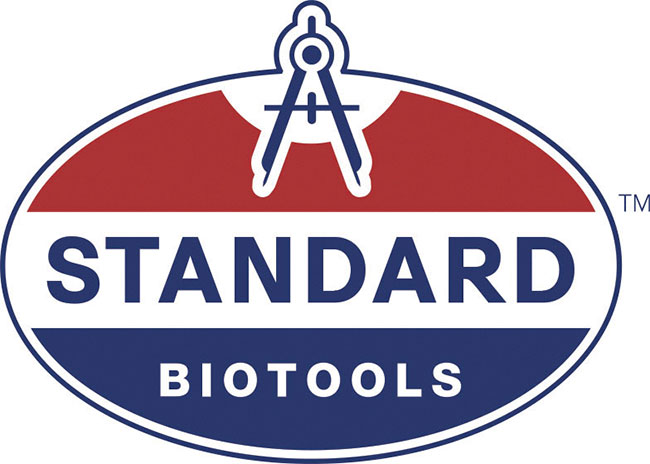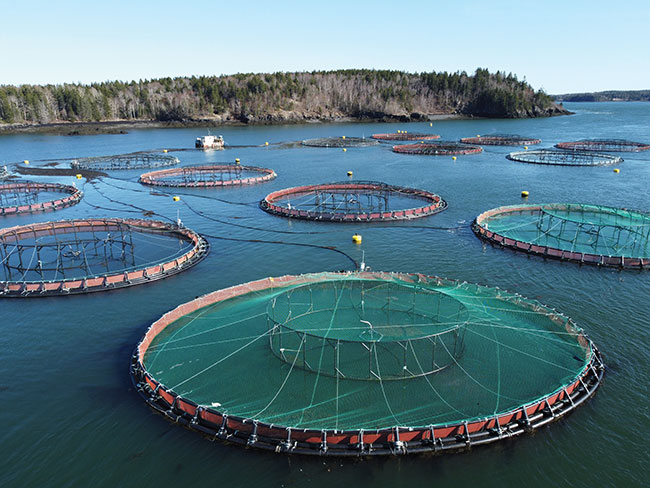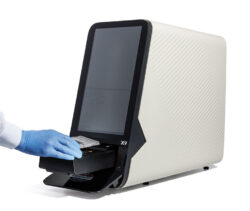
Innovative Microfluidics Tech Revolutionizes Pathogen Detection, Genetic Research
July 11, 2023
By Standard Biotools
Brought to you by Standard Biotools

There is a new, powerful tool in aquaculture that can efficiently identify pathogens and genetic markers in fish and shellfish.
Microfluidics-based technology from Standard BioTools™ (formerly Fluidigm®) is capable of examining multiple samples simultaneously, which can help professionals better understand disease resistance and improve breeding programs.
“To use a fishing analogy, it’s not like casting the whole, wide net out and trying to see what kind of data they get back,” said Phil Kilgas, Senior Manager of Product Management at Standard BioTools™. “This is targeted. I’m looking for this specific genotype, let’s see if this population has it.”
How it works
Microfluidics is the foundation for the integrated fluidic circuit (IFC), which contains a network of microscopic channels that allow researchers to test fish samples for targeted pathogens or specific genetic markers. What makes it unique is its ability to analyze samples, each with multiple pathogens, concurrently on the same chip.
 As an example, 96 samples can undergo interrogation with 96 pathogens or targets, in individual reactions. This ensures a thorough analysis of any potential threats within the fish or shellfish specimens without the challenges of multiplexing or contamination.
As an example, 96 samples can undergo interrogation with 96 pathogens or targets, in individual reactions. This ensures a thorough analysis of any potential threats within the fish or shellfish specimens without the challenges of multiplexing or contamination.
There are two main uses for this technology, according to Naveen Ramalingam, Senior Director of Assay Development and Genomics R&D at Standard BioTools™. The first is parentage.
Microfluidics precisely identifies genetic markers, which allows breeders to accurately trace lineage, enabling more effective breeding tactics and managing diversity.
“Second, most fish farmers, or even shrimp farmers, have the need for pathogen identification tools. We offer a panel of pathogens that can be tested using one sample.”
This results in faster identification of the pathogen causing infection, and it eliminates the need to do multiple tests. “In one test, you can detect the pathogen responsible for the infection,” said Ramalingam.
It’s more cost-effective because the amounts of DNA and reagents that are required for this test are lower than for traditional tests. IFCs significantly reduce reaction volumes by using nanoscale amounts for each reaction, meaning they use less sample and reagents per test.
“In the past, you would test for a particular pathogen. If your first test is negative, then you must run another test to see what else is there,” he said. “But with microfluidics, you can detect multiple pathogens in one test and get the answer right away.”
It’s also scalable. Sample and target options allow from 144 to 9,216 individual reactions per run without the need to change platforms.
Sustainable solution
Time and money aren’t the only advantages with microfluidics — the technology enables a greener and more sustainable product.
“The amount of plastics that these labs could save is 200-fold,” said Kilgas.
Cast study: Alaska Department of Fish and Game
Kilgas points to an example from the Alaska Department of Fish and Game. It used 54 IFCs to do a batch of testing that would have required 1,300 plastic plates using older technology.
 The agency is using microfluidics in the field for their work on sustainable ocean fishing off the coast of Alaska.
The agency is using microfluidics in the field for their work on sustainable ocean fishing off the coast of Alaska.
In one study, they’re taking samples of salmon to determine what percentage of a specific species is in the water.
“Using molecular markers, if they find a low percentage of a rare stock, they can recommend that fisherman not fish in that particular location, reducing the risk of overharvesting the limited stock,” said Ramalingam.
The agency’s use of the system is not typical for aquaculture, but shows how powerful it can be in identifying species quickly and efficiently. The field team even mounted a microfluidics system on a boat for operation in the field, while in most cases the system would be used in a stable lab environment, said Kilgas.
Use in breeding
Kilgas called out the beef industry as an example of how using genetics can identify desirable traits in animals.
“It’s like wagyu beef. If you find cows that have quality meat, you want more of that offspring,” he said. “The same can be true for the breeding of different fish or shellfish. There are so many uses for molecular testing in aquaculture.”
Watch our webinar on molecular testing in aquaculture using our X9 system from the 2023 Aquaculture Technology Webinar Week!
https://www.aquaculturenorthamerica.com/webinars/standard-biotools/
For more information, visit
https://www.standardbio.com/products/technologies/microfluidics or
contact phillip.kilgas@standardbio.com.





